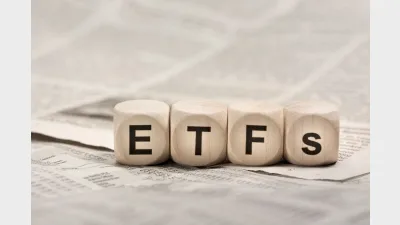Fund managers hold hope for China’s revival following disappointing stimulus



While China’s latest stimulus package may have fallen short of investor expectations, fund managers have not entirely ruled out a Chinese economic rebound, proposing that stronger, more targeted stimulus support could eventually drive a strong recovery.
During a highly anticipated press conference on Tuesday (China Standard Time), Shanjie Zheng, chairman of China’s National Development and Reform Commission, outlined several measures to boost the economy, expressing China’s “full confidence” in achieving its 5 per cent growth target for the year.
China, Zheng said, will front-load CN¥100 billion (US$14.19 billion) from its 2025 central budget for investment and another CN¥100 billion for projects supporting major strategies and key fields.
Other measures to boost domestic spending and support the property market were also announced, but were labelled “vague” by Jun Bei Liu, portfolio manager at Tribeca Investment Partners.
Speaking to Super Review sister brand InvestorDaily, the portfolio manager said she is disappointed in the lack of specifics, especially considering the substantial build-up leading to the press conference.
Economists had previously flagged larger fiscal stimulus would be required after last month the People’s Bank of China (PBOC) announced a monetary stimulus package that includes cutting reserve requirement ratios and policy interest rates, lowering mortgage rates and down payment requirements for second homes, and implementing new structural monetary policy tools to support the stock market.
While market sentiment initially improved, it quickly became clear that these monetary measures would likely be insufficient to stimulate domestic growth. At that time, the focus of the stimulus on infrastructure investment, welfare spending, and local government financing was seen as essential to boost China’s slowing economy.
“Before the [latest] announcement, there were expectations of CN¥2 trillion to be given back, like helicopter money, to be injected into the economy. All they said [on Tuesday] was to really reinforce what they have announced so far, which to me is disappointing,” Liu said.
She said that a key issue hindering China’s efforts to reverse its economic decline and restore confidence is the government’s tendency over the past 18 months to implement small measures and provide vague indications of potential stimulus.
The hours following Zheng’s announcement saw volatile trading in China’s markets. The Hang Seng Index initially plummeted by around 9 per cent, while the Shanghai Composite Index gained 4.6 per cent.
As at 9 October 4 pm AEST, both indices were down, declining 1.4 per cent and 5.3 per cent, respectively.
According to Liu, while the new stimulus, coupled with the PBOC announcement last month, is certainly welcome, investors are seeking “something bigger” to reignite their confidence in the Chinese economy.
Presently, she believes they have given up on prospects of a sharp recovery.
“There is going to be a recovery, but it’s going to be very slow, and I think certainly, by the end of this year, things will still be sluggish. By next year, we do hope it should start to improve,” she said.
However, Liu said there are still opportunities in the Chinese market, particularly in consumer-oriented companies. She said that, despite the new stimulus measures, Chinese consumers have already received significant liquidity and support, and once confidence improves, they will have the “firepower” to spend.
“Ultimately people need to sit back and realise, the Chinese economy will eventually turn, and it’s just about confidence, which can turn quite quickly,” she said.
“What the government really needs is a number of announcements just to keep the confidence going. Clearly, they disappointed in this one and there was so much expectation, [but] I do think it’s not too far away, because they can’t afford the economy faltering.”
Nicholas Yeo, head of China equities at abrdn, noted a “substantial disconnect” between valuations and earnings for quality Chinese companies, highlighting that improved liquidity from the PBOC could lead to a sustained rerating and more rational market behaviour, potentially resulting in upward earnings revisions.
“The missing part of the equation for high-quality Chinese equities has been liquidity, which the PBOC has directly addressed. There is scope for a long and sustained rerating for these companies, given how negative sentiment has become,” he told InvestorDaily.
With improved market liquidity, he anticipates “more rational behaviour,” suggesting that upward revisions could occur heading into 2025, increasing from this year’s low teens earnings growth.
Yeo emphasised that the government must deliver on fiscal stimulus for the rally to be sustained, saying that the recent package could signal “fresh urgency” to tackle the economic slowdown and represent a “step change” in policy intentions.
Earlier this week, the World Bank warned of a slowdown in the second-largest economy.
It said growth in China will decline from 4.8 per cent this year to 4.3 per cent in 2025, against the challenges of low consumer and investor confidence, persistent property market weakness, and structural headwinds of global tensions and an ageing population.
Noting that while fiscal support “may lift short-term growth”, the World Bank said longer-term growth “will depend on deeper structural reforms”.
Recommended for you
APRA’s executive director has urged super funds to strengthen leadership, operational resilience and member focus as public trust in the system faces fresh challenges.
The firm has appointed Aware Super’s Damian Graham as group chief investment officer to unify its life and funds management teams.
Ethical super fund Australian Ethical has announced the appointment of Anthony Lane as chief operating officer.
The structural shift towards active ETFs will reshape the asset management industry, according to McKinsey, and financial advisers will be a key group for managers to focus their distribution.










